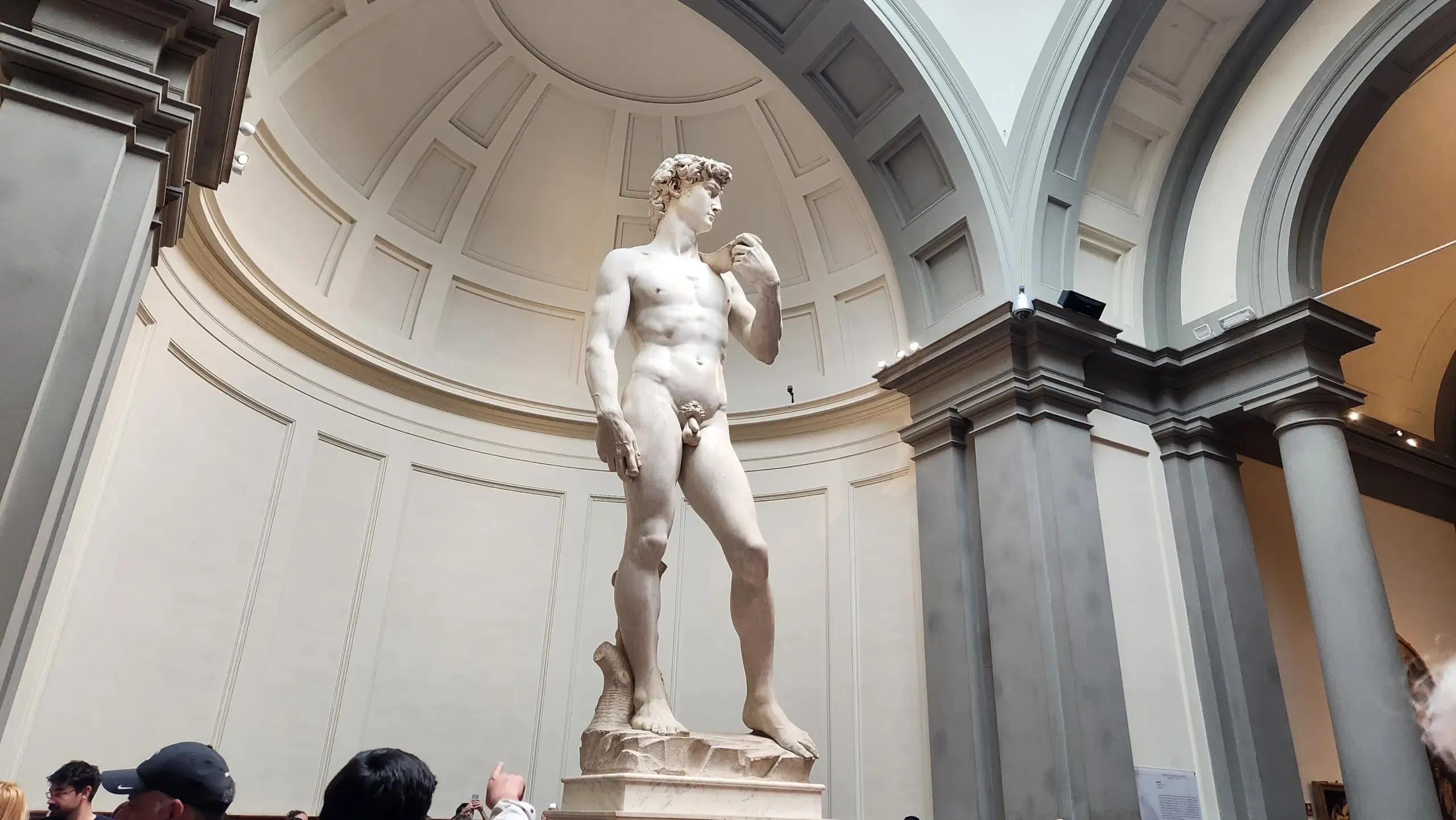Ciao, art enthusiasts! 🎨 Today, I’m taking you to one of Florence’s most cherished treasures, the Accademia Gallery. Known around the globe as the home of Michelangelo’s David, this museum is a must-see for anyone visiting the city. But there’s more to the Accademia than its iconic sculpture. From breathtaking Renaissance art to beautiful musical instruments, this gallery is an inspiring blend of history, artistry, and culture.
A Brief History of the Accademia Gallery
The Accademia di Belle Arti di Firenze, or Academy of Fine Arts, was established in 1563, making it one of Europe’s oldest art schools. Over two centuries later, in 1784, the Galleria dell’Accademia di Firenze (Accademia Gallery) was founded by Grand Duke Pietro Leopoldo as an extension of the art school. Its purpose was to provide students with access to masterful works of art for study and inspiration.
Today, the gallery operates separately as a public museum, and its most famous resident, Michelangelo’s David, was moved here in 1873 from the Piazza della Signoria to protect it from weathering and damage. Since then, the Accademia Gallery has become one of Florence’s most visited attractions, drawing art lovers from around the world.
The Masterpiece – Michelangelo’s David
Standing before Michelangelo’s David is a truly awe-inspiring experience, one that words can barely capture. This 17-foot-tall marble statue is a symbol of perfection, strength, and beauty, embodying the Renaissance ideal of the human form. Michelangelo carved David from a single block of Carrara marble that had been deemed flawed and left unused for over 40 years. Despite this, the artist transformed it into a masterpiece of unparalleled detail and emotion.
What strikes you most about David is its incredible realism. Every sinew, muscle, and vein reflects Michelangelo’s deep understanding of human anatomy. The subtle tilt of David’s head and the intense concentration in his eyes create a narrative tension – you can almost feel his readiness to confront Goliath. His confident yet calm stance, known as contrapposto, was revolutionary, giving the statue a lifelike dynamism that continues to captivate audiences.
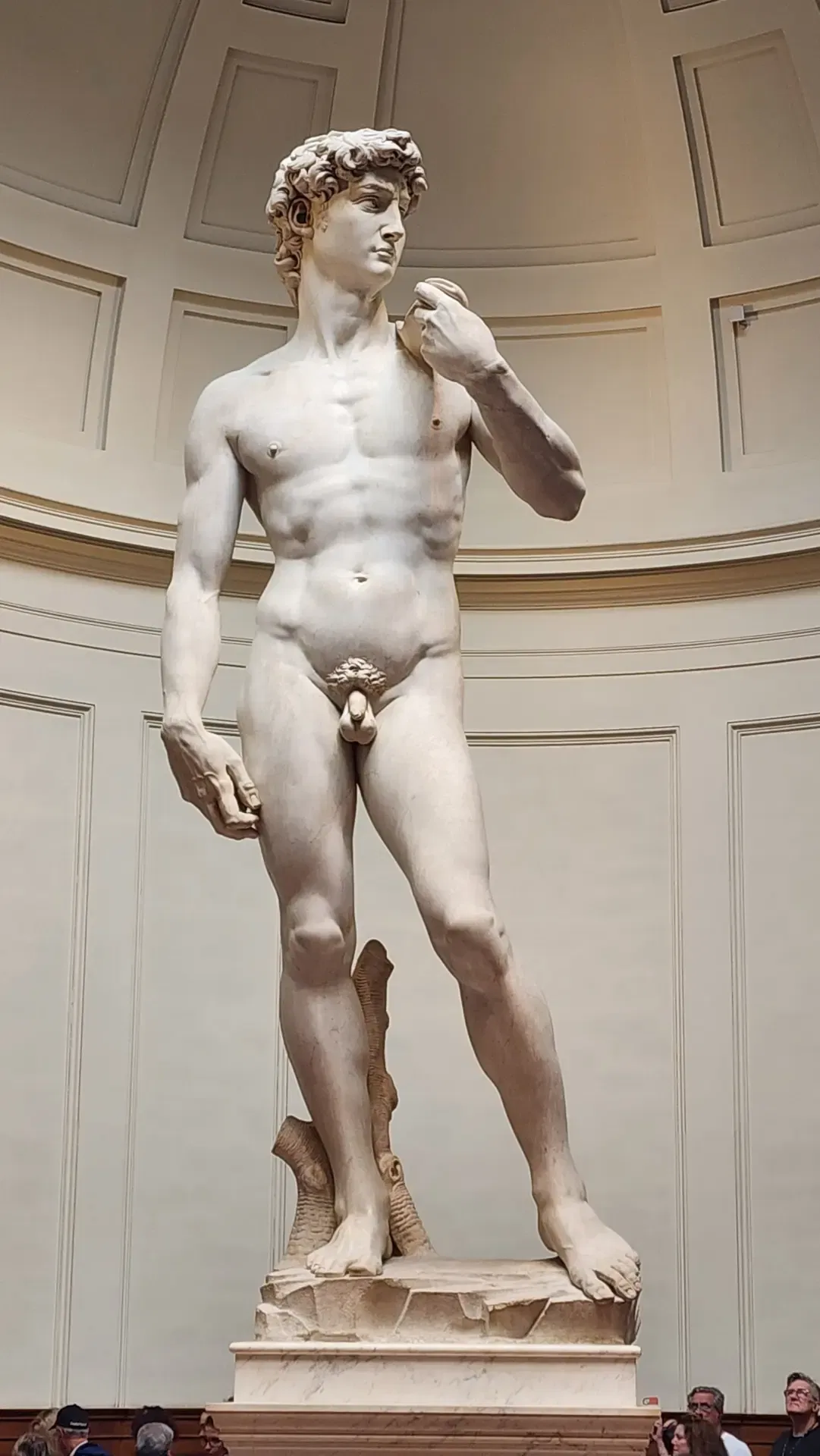
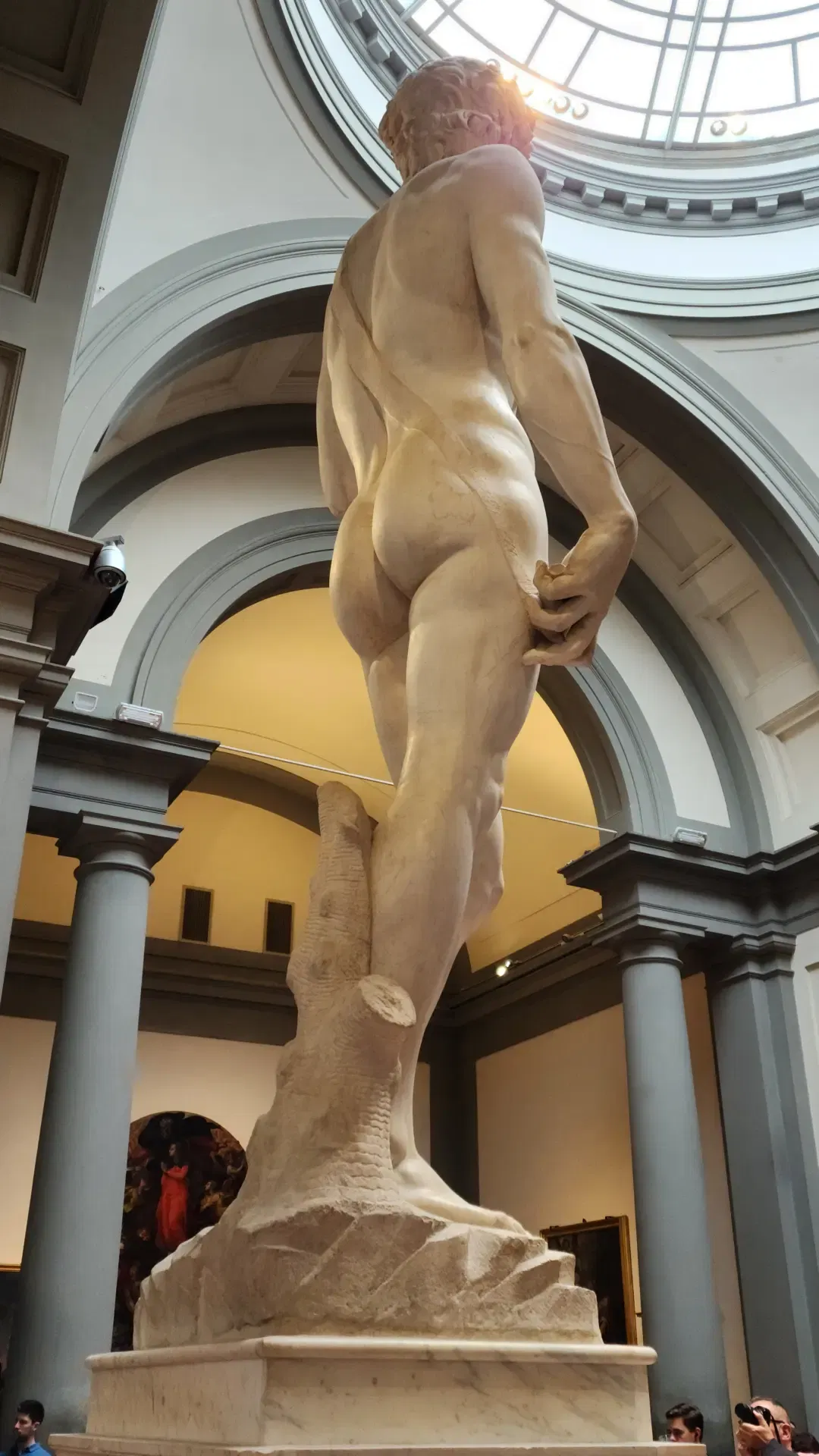
When you stand beneath this towering figure, you’re not just looking at a sculpture; you’re witnessing Michelangelo’s genius and the embodiment of Florence’s spirit during its golden age.
The Hall of Prisoners – The Art of the Unfinished
The path to David leads through the Hall of Prisoners, a space that feels almost sacred in its raw, artistic energy. Here, you’ll encounter Michelangelo’s unfinished works known as the “Slaves” or “Prisoners” – figures seemingly trapped within their blocks of marble, struggling to break free.
Each statue has a unique character and tells its own story:
- One figure appears to twist in agony, muscles straining as if caught mid-motion.
- Another gazes outward, its head and shoulders emerging while its lower body remains unformed.
- A third seems to push against the confines of the marble, yearning for release.
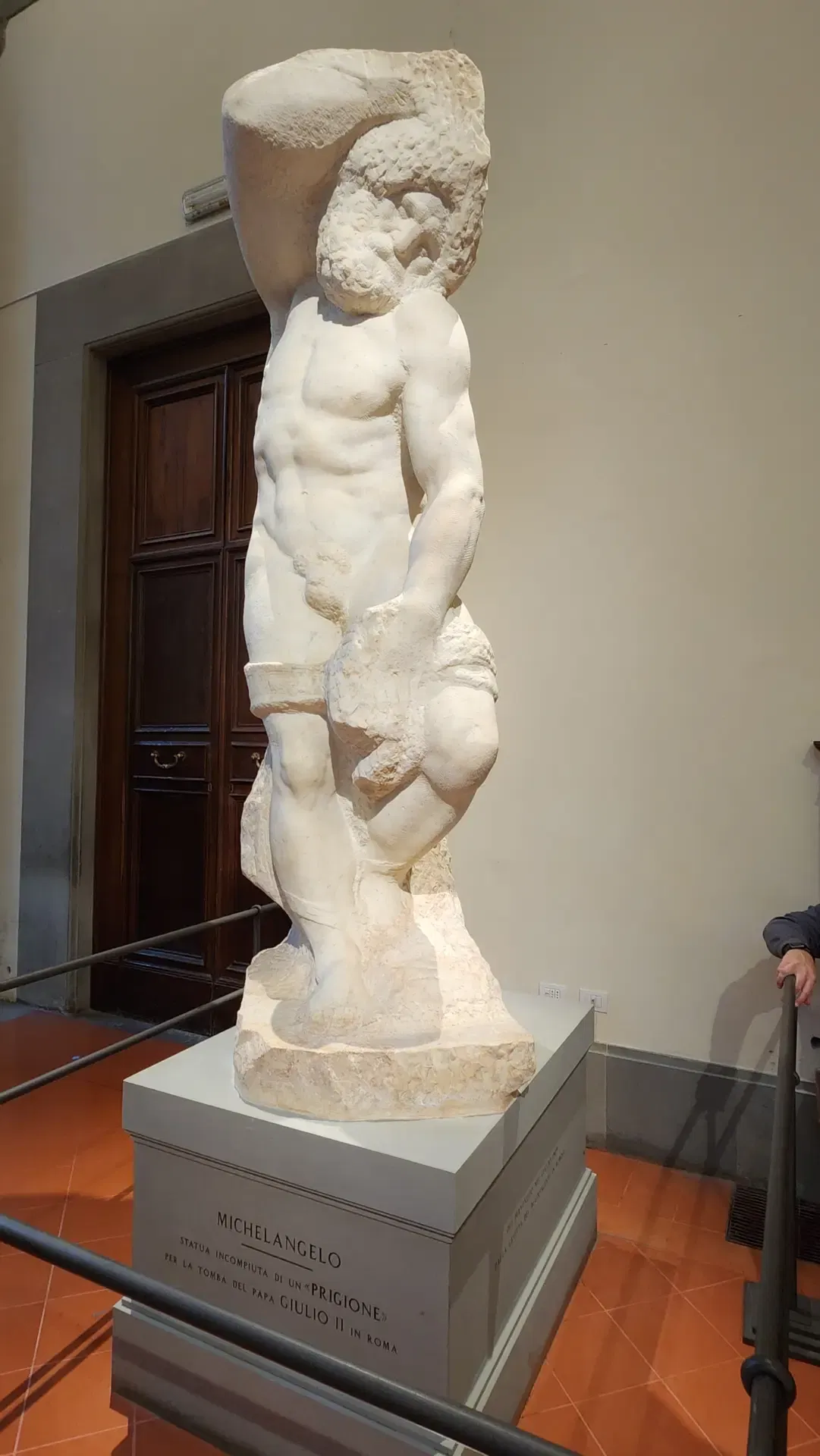
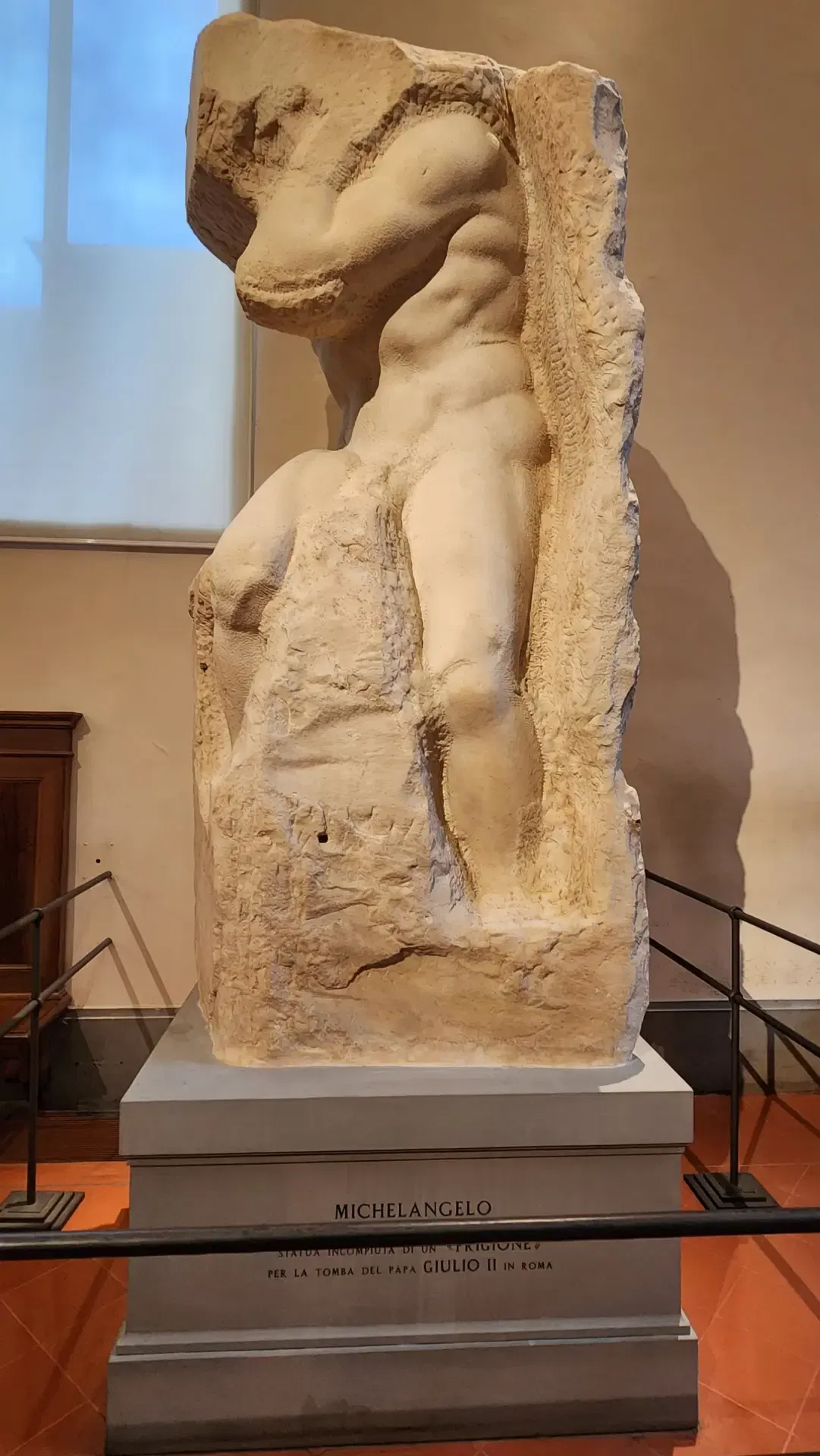
These incomplete works offer an intimate look at Michelangelo’s creative process and philosophy. He believed that the artist’s role was to free the form already present within the stone, and the Slaves vividly illustrate this concept. Some art historians see these unfinished pieces as metaphors for the human struggle for liberation, while others view them as demonstrations of Michelangelo’s technical mastery.
Walking through the Hall of Prisoners, you can’t help but feel the tension between potential and completion. It’s a humbling reminder that even the greatest of artists left some works unfinished – adding to their mystique and allowing us a rare glimpse into their world.
Other Highlights of the Accademia
While David is undoubtedly the star of the show, the Accademia has so much more to offer:
- Florentine Gothic Art: Works by artists like Giotto, Andrea Orcagna, and Paolo Uccello take you on a journey through the evolution of art in Florence.
- Musical Instruments Museum: A lesser-known gem, this section features instruments from the collection of the Medici family, including a 17th-century Stradivarius violin.
- Plaster Cast Gallery: Admire 18th- and 19th-century plaster casts used as studies for sculpture.
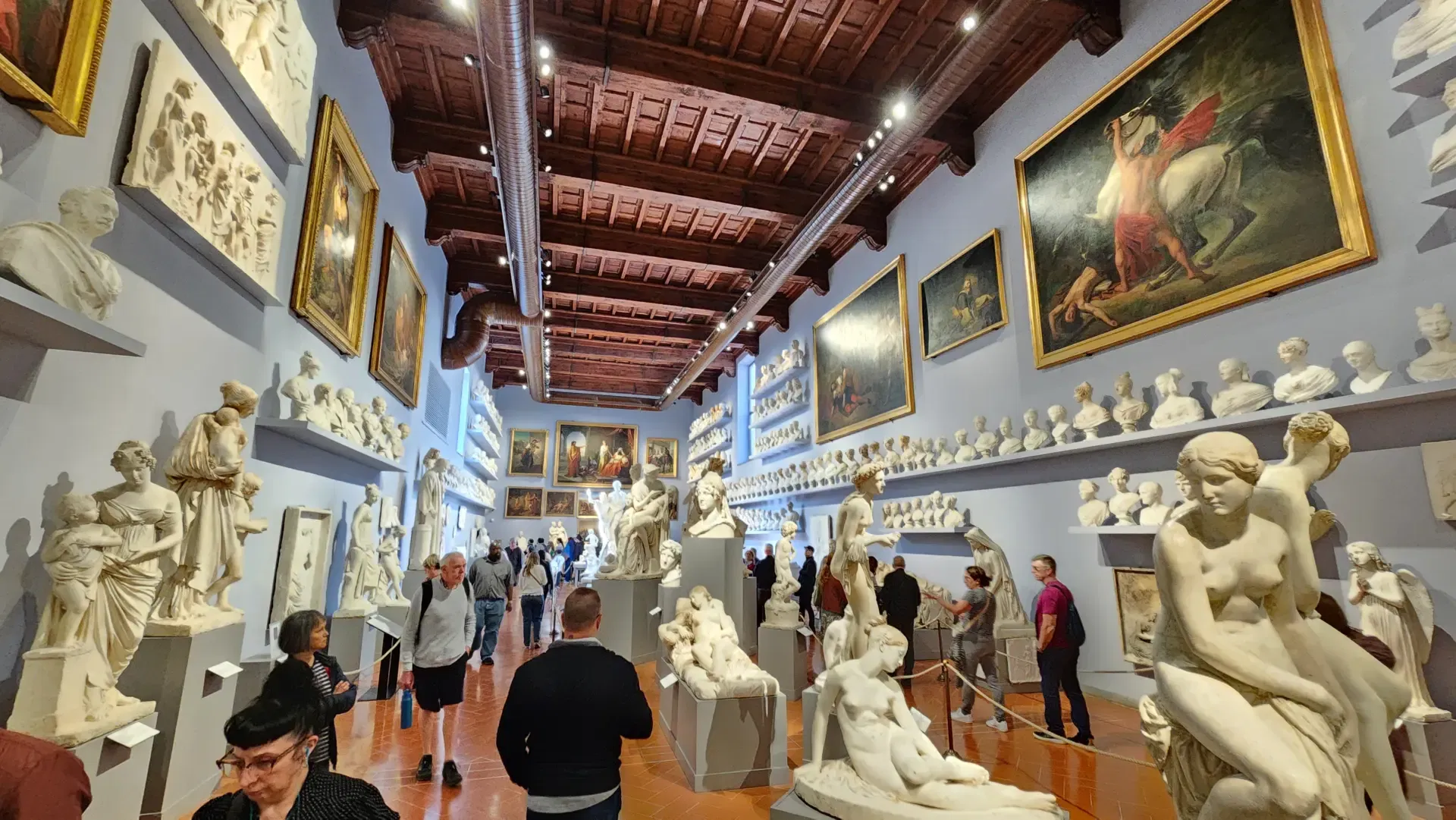
Practical Information for Your Visit
- Location: Via Ricasoli, 58/60, 50122 Florence, Italy.
- Opening Hours:
- Open Tuesday to Sunday, 8:15 AM to 6:50 PM (last admission at 6:20 PM).
- Closed on Mondays.
- Tickets: Advance booking is highly recommended, especially during peak tourist seasons. Options include standard tickets, guided tours, and skip-the-line passes.
- Photography: Non-flash photography is allowed, so bring your camera to capture the beauty (but not the flash!).
- Accessibility: The gallery is wheelchair accessible.
Tips for Visitors
- Arrive Early or Late: The gallery can get crowded, so plan your visit during off-peak hours.
- Take a Tour: A guided tour can enhance your appreciation of the artworks and their history.
- Spend Time with David: Don’t rush – take a moment to truly admire the intricacies of this masterpiece.
Final Thoughts
The Accademia Gallery is not just about masterpieces; it’s about connecting with the spirit of creation itself. Standing before David and walking through the Hall of Prisoners felt like stepping into Michelangelo’s mind – a space where genius, struggle, and beauty converge.
If you visit Florence, don’t just stop by the Accademia; linger, reflect, and allow these works to speak to you. They’re more than just art—they’re a testament to the enduring power of human creativity.
Until next time, keep finding your sparkle, everywhere! ✨🎨
Xoxo,
Bubbly 🎈

